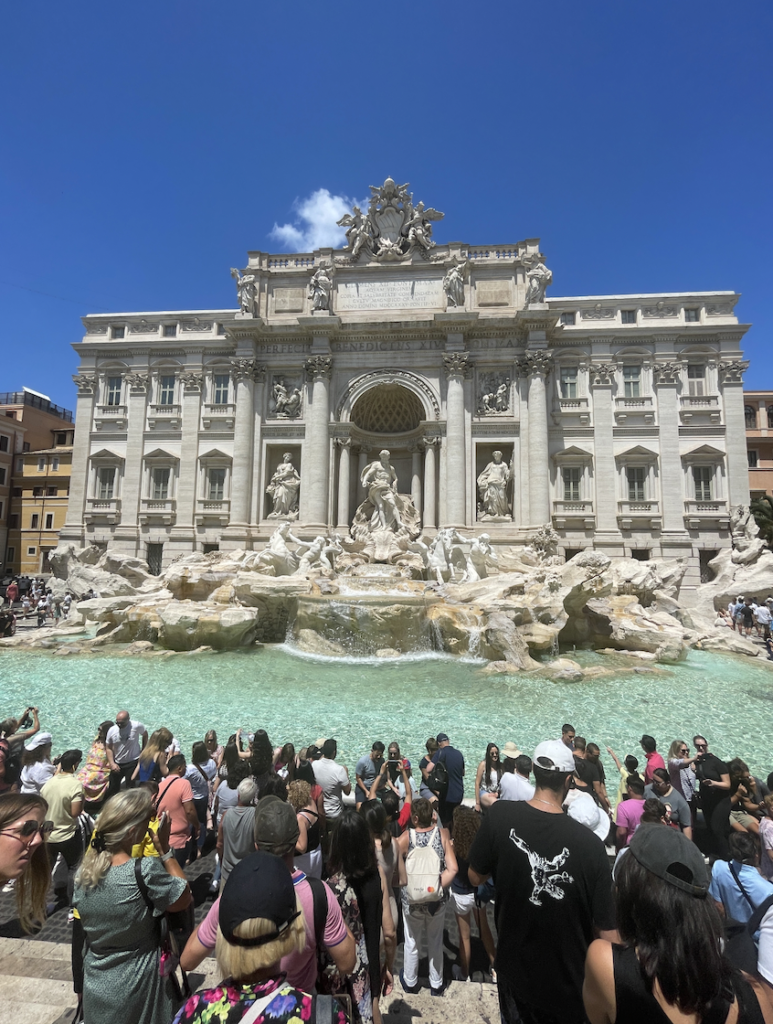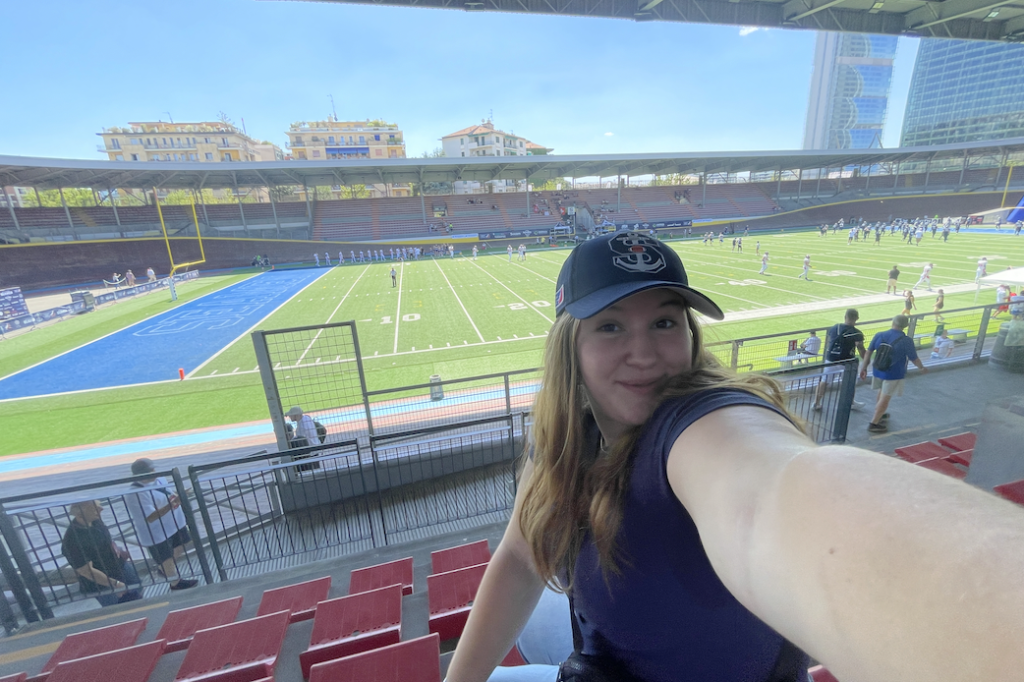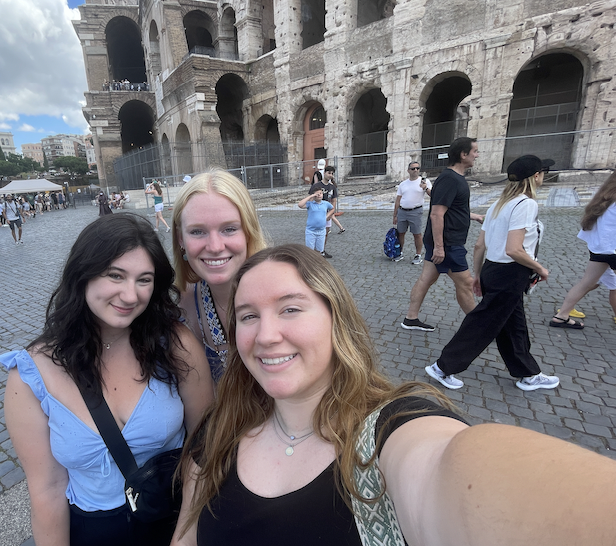Throughout this summer, the unique experience of living abroad has definitely allowed me to feel more united in a global community, interacting daily with people I would have never met without traveling across the ocean. With this extreme privilege also comes the ability to notice the small things about my daily interactions that both help me understand my role as a “global citizen” and also connect with those outside of my nationality. Europe in general has its preconceived notions of America—often labeled as the “noisy tourists” that arrive for the stretch of the year between May and September. For many of the people I interact with on a daily basis, I’m the first American they’ve truly met. While this at times feels daunting, as I’m creating a perception of an entire country to them, at the same time it’s a very valuable experience to show them the pieces of my life in the states that have shaped who I am.
The first few weeks in Milan came with a lot of questions about the USA: graduate students were shocked to find out that I lived six hours by car away from my home to attend college, that a US large soda is “truly absurd” by comparison to the European equivalent, and many conversations about what Americans do for fun were exchanged. Sometimes it felt that there was an assumption that America was exactly as those cliche teen movies characterized it—and there is some truth behind the stereotypes of Friday Night Lights and the Fourth of July. But overall I didn’t really experience harmful stereotyping by my peers, more of a genuine curiosity about the other side of the planet. I recall one of my graduate student mentors perplexed at just exactly why I decided to study in Italy this summer—America is so far away and has everything one could possibly need. The glamorization of American life is definitely palpable, but it more creates a sense of shock or curiosity in those I interact with as opposed to confusion.
For the most part, I think the Italian perception of the USA is shockingly accurate. Italian young people are almost midwestern in their politeness—everyone is friendly and eager to socialize, but one large difference between Italian young people and American young people is within the university experience. While students still attend university and can sometimes live in dormitory-style housing, the party-sport-study-repeat structure of American university life is not at all replicated. All these aspects of life are distinctly separate. Sports being a fixture in American university culture was so shocking for many of the people I interact with daily—school is a place for studying. The concept of so many students continuing sports alongside their education was something that definitely contributed to the heterostereotypes that I sometimes saw in my daily life. The differences in university life between Italy and America definitely contribute to the heterostereotype of the USA being a hub for partying, drinking, and generally just “being American” in the most stereotypical sense. When I view America from their point of view, it does make a lot of sense that many of the aspects of our culture that others are aware of is in the form of socialization—movies depict it, songs are about it, it’s the most accessible view of the US from an abroad angle. I think seeing how America is perceived also helps me understand better the similarities and differences in Italian culture, and taking these small observations with me has helped immensely in my cultural integration.




